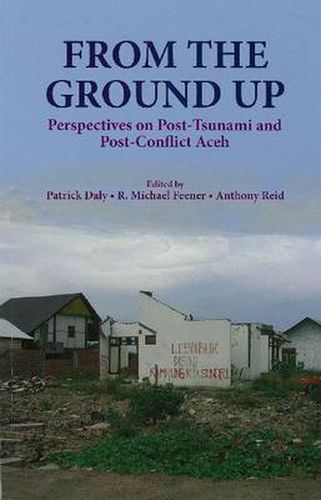Readings Newsletter
Become a Readings Member to make your shopping experience even easier.
Sign in or sign up for free!
You’re not far away from qualifying for FREE standard shipping within Australia
You’ve qualified for FREE standard shipping within Australia
The cart is loading…






This title is printed to order. This book may have been self-published. If so, we cannot guarantee the quality of the content. In the main most books will have gone through the editing process however some may not. We therefore suggest that you be aware of this before ordering this book. If in doubt check either the author or publisher’s details as we are unable to accept any returns unless they are faulty. Please contact us if you have any questions.
The tsunami that struck a dozen countries around the Indian Ocean on 26 December 2004 evoked international sympathy on a scale beyond any previous natural disaster. The international relief effort broke all records both in scale and diversity, with seven billion U.S. dollars donated from all over the world through public and private agencies for Sumatra alone. Simply as a reconstruction effort, therefore, the disbursement of those funds and the rebuilding of housing, infrastructure, and economy posed major national and international challenges. However this was not simply a reconstruction effort. Aceh at that time was a war zone, with Indonesias military engaged in a major operation to crush a separatist rebellion that had been simmering since 1976. Even though the funds had been donated for tsunami relief, any real reconstruction of Aceh had to consider the impact of the conflict on the well-being of the population, as well as governance and administrative capacities. This volumes serves the purpose not only of discussing some of the lessons of the Aceh reconstruction and peace processes, but also of maintaining critical links between Aceh and the international community after the initial tranches of aid expire.
$9.00 standard shipping within Australia
FREE standard shipping within Australia for orders over $100.00
Express & International shipping calculated at checkout
This title is printed to order. This book may have been self-published. If so, we cannot guarantee the quality of the content. In the main most books will have gone through the editing process however some may not. We therefore suggest that you be aware of this before ordering this book. If in doubt check either the author or publisher’s details as we are unable to accept any returns unless they are faulty. Please contact us if you have any questions.
The tsunami that struck a dozen countries around the Indian Ocean on 26 December 2004 evoked international sympathy on a scale beyond any previous natural disaster. The international relief effort broke all records both in scale and diversity, with seven billion U.S. dollars donated from all over the world through public and private agencies for Sumatra alone. Simply as a reconstruction effort, therefore, the disbursement of those funds and the rebuilding of housing, infrastructure, and economy posed major national and international challenges. However this was not simply a reconstruction effort. Aceh at that time was a war zone, with Indonesias military engaged in a major operation to crush a separatist rebellion that had been simmering since 1976. Even though the funds had been donated for tsunami relief, any real reconstruction of Aceh had to consider the impact of the conflict on the well-being of the population, as well as governance and administrative capacities. This volumes serves the purpose not only of discussing some of the lessons of the Aceh reconstruction and peace processes, but also of maintaining critical links between Aceh and the international community after the initial tranches of aid expire.